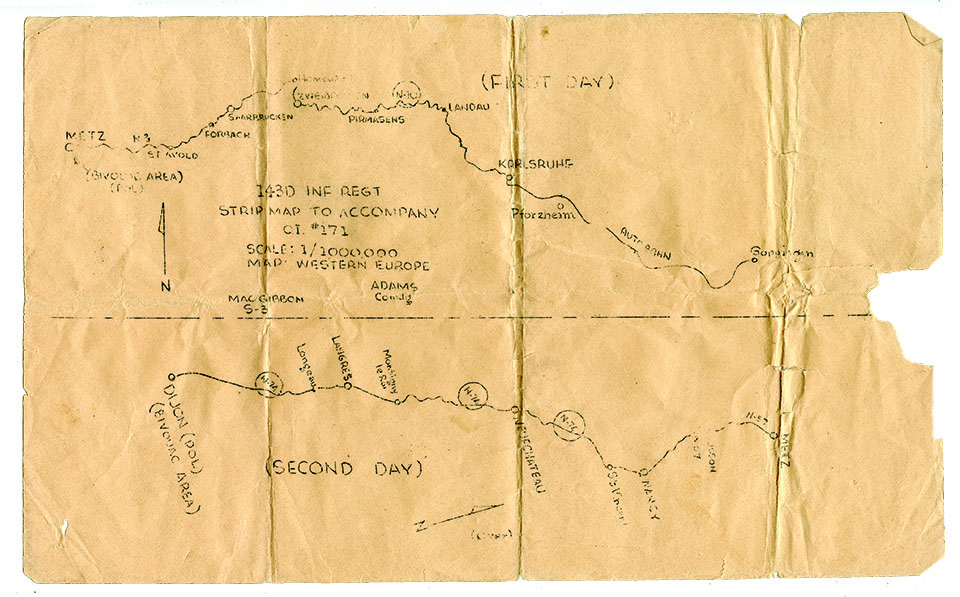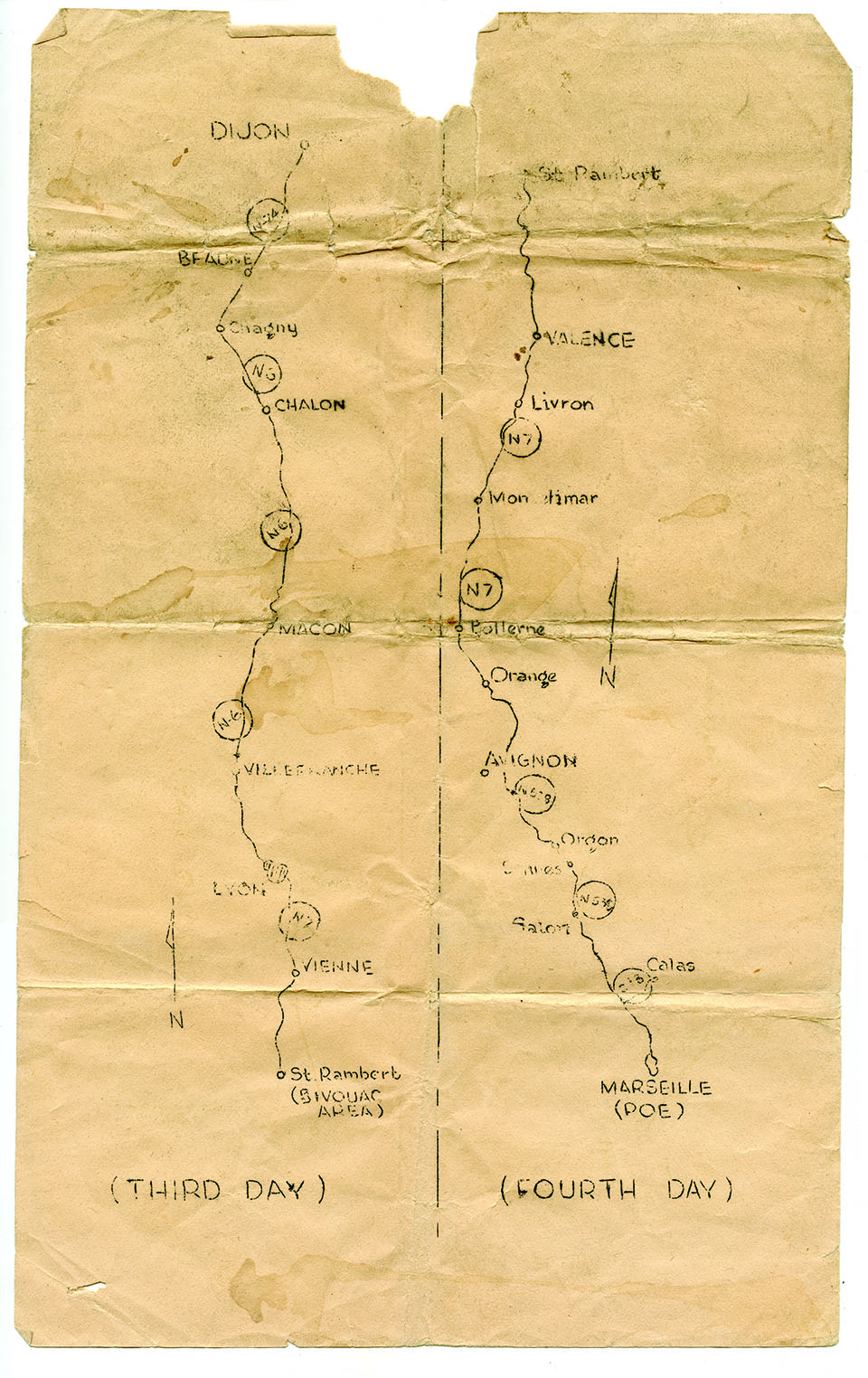I recently came across a map that had belonged to my father, George Robert Pyles. He was a private first class in the 100th Infantry Division and participated in the invasion of France.
I can’t make much sense of the map, and would appreciate some help.
—Bob Pruitt, Fort Lauderdale, Florida

This is an undated strip map for the 143rd Infantry Regiment. A strip map focuses on a specific route, and an examination of this one provides a great deal of information on the route of the 143rd Infantry Regiment—part of the 36th Infantry Division—as it departs from Europe. Beginning on the first day at Göppingen, Germany, the regiment proceeds to Metz, France. The map notes there is a bivouac area there as well as a “POL”—for “Petroleum, Oil, and Lubricants”—where vehicles can be fueled and serviced. On day two the convoy heads for Dijon, France, where a bivouac area and POL are again provided. Day three ends at Saint Rambert with only a bivouac area. Finally, on day four the convoy reaches the south coast of France and Marseille, which is labeled “POE” or Port of Embarkation.
All of this is relatively straight-forward. What isn’t clear is how Private Pyles ended up with the map. He may have been a driver; strip maps are simple to produce, but only officers, NCOs, and drivers likely would have been provided them. We do know that the 100th Infantry Division ended the war in the Göppingen area, and that the 36th Infantry Division, whose war ended in Austria, moved into the Göppingen region before December 1945. (continued below)

The 100th Division began the journey from Göppingen to Marseille on December 9, 1945, following the same route the 36th Division had taken the month before. Lead elements of the 100th Division departed Marseille on New Year’s Eve; the last elements of the division departed in February 1946.
Along with victory in World War II came a desire of citizen soldiers to be demobilized. This was accomplished in part by a points system that factored in time in service and time overseas. Since departure from Europe was by unit and not by individual, there was considerable shifting of personnel to place men with high points in units to be sent home, while men with low points stayed on in units slated for occupation duty.
Based on Private Pyles’s discharge date of December 30, 1945—the day before any unit from the 100th Division departed from France—it seems very likely that Pyles had a high number of points and was transferred to the 36th Division to head out early.
In any case, this sort of artifact is rarely encountered. Soldiers often save items associated with mobilization or combat; items retained from the return trip home are scarce. —Tom Czekanski, Senior Curator and Restoration Manager





